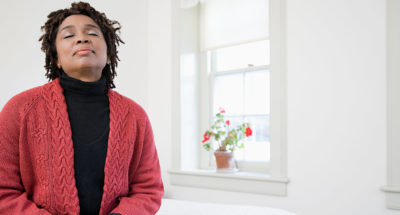
Brief Body Scan
A mindfulness practice that relaxes each body part, helping you to release tension and calm the mind

A mindfulness practice that relaxes each body part, helping you to release tension and calm the mind
You will:
Click here to listen to the audio recording and/or read the transcript below.
* You can also listen to a 45-minute version of the Body Scan that the UC San Diego Center for Mindfulness uses in its trainings in Mindfulness-Based Stress Reduction.
Mindful Meditations created by Diana Winston for the UCLA Mindful Awareness Research Center. www.uclahealth.org/marc ©2011- 2019, The Regents of the University of California. All Rights Reserved.
How did you feel during the practice? How do you feel now? Were you able to let go of your thoughts to focus on your body?
Of all the mindfulness practices on offer, the body scan is the most popular—and it’s a great introduction to mindfulness. Adults who regularly engage in the body scan report greater psychological well-being and self-compassion, less reactivity to stress, and a decrease in depression.
And teachers who practice mindfulness, in general, for just a few weeks report a decrease in burnout, stress, anxiety, and depression. They also experience a range of physical health benefits, including lowered blood pressure and better sleep quality.
When work stress is high at school, we tend to get caught up in the stream of thoughts and feelings we experience, so it’s crucial to take regular breaks to reboot our nervous systems. The body scan helps us to shift away from our thoughts to focus on physical sensations. Because the mind can only be aware of one thing at a time, a systematic, head-to-toe focus on the body can provide relief from a barrage of thoughts, slowly stabilizing our minds.
If you take time for self-care by practicing body scans regularly, you will likely feel more energized, less stressed, and more equipped to meet the needs of your students.

Do you want to dive deeper into the science behind our GGIE practices? Enroll in one of our online courses for educators!
Comments